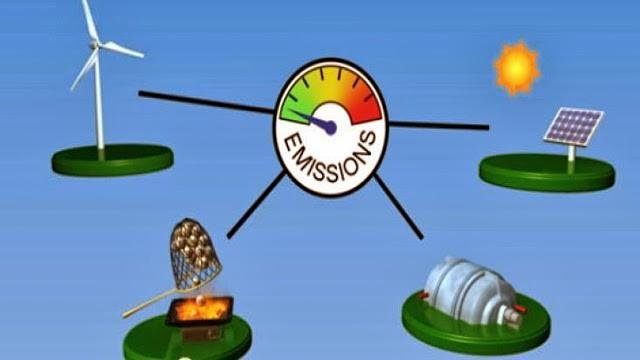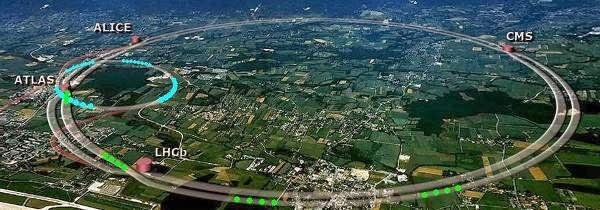Future Power Generation, Carbon Energy

If carbon dioxide (CO2) has been considered pollution, scientists have now turned carbon dioxide into a future powerhouse. The development of a new type of upcoming geothermal power plant is expected to be able to use undesirable underground carbon dioxide. This method to increase the power plant is at least ten times greater than the current geothermal electrical energy approach.
Technology is turning carbon dioxide into electrical energy is now in the development stage of the industry, so later the researchers are optimistic that the approach could expand the use of heat energy. It is expected that this technology can be developed in several countries of America and other countries that have the same potential. The study was written by Jeffrey Bielicki, an assistant professor of energy in the Department of Civil, Environmental and Geodetic Engineering and John Glenn School of Public Affairs of Ohio State University. The research was funded by the US Department of Energy's Office of Energy Efficiency and Renewable Energy.
+$Future Power Generation Carbon Dioxide (CO2)
From the meeting of the American Geophysycal Union on December 13, 2013, the research team expanded the design and techniques of cognitive learning to explain energy technologies that have an important role in addressing climate change. The design of the newest generation of power plants resembles a cross between geothermal power plants in general, much like the Large Hadron Collider (LHC) model that features a series of concentric circles of horizontal wells in the ground. In the LHC ring, carbon dioxide (CO2), nitrogen and water circulate separately to attract heat from the underground to the surface. Some water is replaced with CO2 or other liquids or a combination of liquids. Then the exit heat is used to
rotate the turbine that will generate electricity.
This analytical approach uses concentric rings in which some fluids are circulated. This method was originally based on the idea of using carbon dioxide developed by Martin Saar and colleagues from the University of Minnesota. In computer simulations, this technology at least produces two times more efficient than conventional geothermal approaches. The research team also plans to add the mixture into it in the form of nitrogen in order to produce greater electrical energy.
Tom Buscheck and other fellow researchers believe that multifluid designs will be able to boost geothermal power plants to store more energy, possibly reaching hundreds of GigaWatt for several days or even months. Underground geothermal generation is capable of storing heat pressurized carbon dioxide and nitrogen, then releases heat to power plants on the surface when demand for power supply increases. The system also suspends heat extraction from the bottom when the demand for power is low or when there is a surplus of electricity generated on the surface.
In the computer simulation, a system that uses a 10-mile-wide concentric ring lies 3 miles underground, capable of producing half a Gigawatt of electrical power. This energy is comparable to that of a middle-class coal-fired power plant and is 10 times larger than a geothermal generator that produces an average of 38 Megawatts. The design of a new power plant will probably absorb about 15 million tons of CO2 per year, the amount of pollution equivalent to that of 3 middle-class coal-fired power plants.
According to him, most of the world's future geothermal power sources are in California and Nevada, where very hot water is relatively close to the surface. But the designs introduced by the research team are much more efficient at storing energy and expelling heat, even on a small scale can be used as a source of energy supporting other regions. In addition, the use of this technology is expected to cope with climate change issues, storage of carbon dioxide reserves and geothermal energy in the future.
However, many are hoping that future power generation technologies will soon be in place, given the efficiency and importance of reducing carbon dioxide is likely to make the Earth's climate change. Carbon dioxide is also produced from agricultural systems especially in the use of plant fertilizers, where the soil releases CO2 and is known to be a major contributor to current pollution. Can we imagine, within a year this system can reduce 15 million tons of carbon dioxide, a solution that is much better in line with the needs of electric energy is increasing every year.

The Large Hadron Collider is the highest energy particle collector ever made and considered to be one of the greatest engineering of mankind. The LHC was built by the European Organization for Nuclear Research (CERN) from 1998 to 2008 with the aim of testing the predictions of different theories in particle and physical energy. It specifically proves the existence of Higgs particle theory, and addresses the unsolved questions in physics. The LHC development budget spent 7.5 billion euros in June 2010 making it considered the most expensive scientific instrument ever built by humans. This instrument is equivalent to a nuclear reactor and the energy released is much larger than the existing reactors worldwide.
Although still in the form of simulation, but the model currently run on the Large Hadron Collider has tested the truth of the theory and analysis revealed by Buscheck and other researchers. LHC development is indeed costing billions of euros, but it works for any physics-related research that accompanied the nuclear reactor. If development with the same model for future power generation sources of carbon dioxide energy, the required value is much smaller.